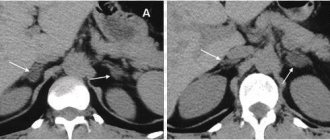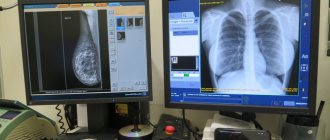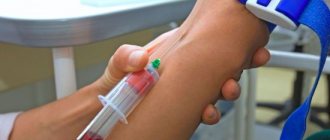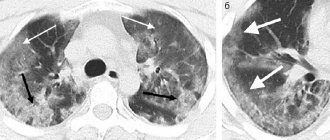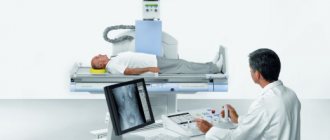Making a diagnosis and diagnosing many diseases is impossible without a general urine test, which is prescribed very often and includes about twenty points. They help doctors make an accurate diagnosis. Urine is a biological fluid. It is excreted by the kidneys, gradually accumulates in the bladder and is excreted along with waste products. Quantitative indicators indicate the condition of the organs. Each indicator has its own scale of acceptable units. Leukocytes detected in a urine test may indicate the development of an inflammatory process in the body. This will require additional examination and laboratory tests.
Indications for testing
The examination is necessary for the doctor to make a diagnosis and is prescribed in case of suspected pathology: cardiovascular, genitourinary, endocrine systems. Based on the test results, the specialist will be able to determine disorders in the functioning of the immune system and identify diabetes. The study is required to assess the condition of patients who have been diagnosed with streptococcal infection. A general urine test is one of the mandatory diagnostic methods for the prevention of chronic diseases of the genitourinary system, to monitor the dynamics of the disease and the effectiveness of the therapy.
What standards apply for urine analysis?
A urine test helps doctors monitor how the pathological process is progressing in a given patient. Monitoring may be performed during treatment.
It allows for high-quality control of the information received. This will allow doctors to determine high-quality and effective treatment for the patient. To do this, all they have to do is take the test. In this case, urine can tell a lot.
In this case, the following information allows you to determine the indicators thanks to which the standard was established for the subsequent interpretation of the urine test:
Preparing for the procedure - basic collection rules
In order to obtain the most accurate and informative data from a laboratory test, the patient must prepare for it in advance and fulfill a number of mandatory requirements for collecting biological fluid:
- at least 10-12 hours before collection, you should stop taking any medications of herbal origin;
- evening meals should not contain foods with bright colors, for example, beets, carrots, berry compote;
- On the eve of biofluid collection, the consumption of alcoholic beverages is prohibited.
Basic collection rules:
- Urine is collected only in a sterile container (sold in pharmacies).
- Morning urination is considered informative (collection is carried out immediately after waking up).
- Before collection, it is necessary to carry out thorough hygiene of the genitals (you need to wash yourself using neutral cleansers without dyes and fragrances. For these purposes, you can use baby soap or a special gel for intimate hygiene).
- An average portion of urine is collected in the container.
- Before collecting urine, it is forbidden to eat food, drink water or brush your teeth.
Attention! If the diagnosis is carried out during menstruation, the woman should, after careful hygiene of the intimate area, insert a hygienic tampon into the vagina and only then carry out the collection.
IMPORTANT!
The result will be unreliable if the body becomes hypothermic or, conversely, overheats before collecting the liquid. Those. if you take a shower after waking up, the water should be tactilely pleasant to the body - not cold and not hot.
Requirements for collection and storage:
- the minimum amount of liquid that needs to be collected for a full diagnosis is 100 ml;
- the container must be delivered to the laboratory as soon as possible;
- no more than two hours should pass from the moment of collection to delivery;
- if the room is hot, you need to place the container in a cool, dark place for short-term storage (not the refrigerator!);
- It is recommended to transport at above-zero temperatures (the minimum temperature that does not affect the reliability of the results is +5C).
How the research works
The study is carried out in laboratory conditions. The biological fluid is studied in detail under a microscope and using special test strips. All data is recorded on a special form. On average, the duration of the study does not exceed a day. In case of high urgency (when the doctor needs to establish a diagnosis as quickly as possible), the laboratory works out of turn and conducts the study as quickly as possible - within several hours.
The general analysis is assessed by a specialist according to several criteria - physical and chemical.
Physical parameters include liquid color, presence/absence of sediment, density.
Chemical parameters include a more detailed study of the biomaterial using almost twenty indicators, including a specialist determining acidity, concentration, and foreign inclusions.
Decoding the analysis results
Leukocytes in urine: what indicators are considered normal (general analysis)
The norm of leukocytes in urine is established separately for each age group. Quantitative indicators are also influenced by gender.
| Age | Single leukocytes (detected by a specialist in the field of view), units. |
| Girls (from birth to 18 years) | from 0 to 7 |
| Boys (from birth to 18 years old) | from 0 to 5-7 |
| Women | from 0 to 5 |
| Men | from 0 to 3 |
REFERENCE INFORMATION:
During pregnancy (regardless of the period), it is allowed to increase the level of leukocytes to 10-15 units in the field of view. This is the maximum norm and does not require adjustment with medications. The increase in the indicator is due to changes occurring in the woman’s body, which are associated with the activity of the immune system and the formation of vital organs and systems of the fetus.
An indicator above 2000 cells per milliliter of urine volume will be considered elevated. In women, the norm of leukocytes in a urine test may be higher - the permissible value is up to 4000 cells.
An increased content of leukocytes in the urine can be:
- true, associated with inflammatory diseases of internal organs;
- false (leukocytes enter the urine from the genital organs due to poor hygiene before collecting biomaterial, due to diseases of the genital organs, for example, vulvovaginitis in women and balanoposthitis in men);
- infectious (pathologies of the urinary tract);
- non-infectious (provoked by cystitis against the background of allergic reactions, autoimmune diseases, taking certain medications).
Leukocyturia can be insignificant (up to 40 cells in the field of view), moderate (above 40, but not more than 100), severe (more than one hundred visible cells) and is divided into subtypes. It is impossible to determine the exact subtype using a general urine test; additional laboratory and diagnostic testing is required.
What does the reading mean?
VTC is an abbreviation for Vesical Tissue Cells , used to refer to bladder epithelial cells in modern science.
Epithelium is a special type of tissue, a membrane that covers muscles, organs, and body cavities.
Vesical Tissue Cells shows the content of epithelial type cells found in the inner surface of the urinary tract.
VTC should not be confused with VC, which is the amount of vitamin C (ascorbic acid) in the urine.
Leukocytes in urine are elevated (as indicated by deviations from the norm)
The migration of leukocytes through the tissues of the human body with penetration through the walls into blood vessels and capillaries explains their presence in the urine. White blood cells are part of the group of protective immune bodies - they destroy infectious pathogens, absorb toxins and waste products produced by cells. Under physiological norms, the kidneys cope with the role of a “fighter” against pathogens without any problems. If their functioning is insufficient, toxins and breakdown products accumulate in the biological fluids of the body, i.e. in urine.
The norm for leukocytes in a urine test in a healthy person is zero.
An exception is a pathology confirmed by other types of research and diagnosis, which is characterized by leukocyturia, but according to the results of a urine test, the indicators are at zero or close to it. A reduced value will indicate to the specialist the presence of a serious pathological process in the body.
For what reasons do leukocytes in urine increase?
There is an excess of acceptable indicators in the analysis of patients who neglect to adhere to the daily routine (full sleep, rest, moderate physical activity, proper nutrition, etc.), resulting in suppression of the immune system. Long-term use of certain types of cardiovascular, hormonal, and antibacterial medications can also provoke the appearance of leukocytes in the urine.
You can also find out about the norms of leukocytes in the blood on our website.
Reasons for deviations
The reasons for the deviation in the level of epithelial cells lie in the activation of acute, initial or chronic inflammation in the organs of the genitourinary system. As a rule, data on Vesical Tissue Cells are studied in urine sediment and in a healthy body there should be a minimum content of various kinds of particles in its composition.
An increase in epithelial cells of a renal, squamous or transitional nature in the sediment of biological fluid signals that, as a result of the manifestation of a lesion, the tissue surface is destroyed, and particles of the surface epithelium actively enter the urethra. The severity of the flow is illustrated by the final results of the analysis.
However, small amounts of VTC are allowed in the final results, since their inclusion is inevitable due to the peculiarities of the procedure for collecting urine for laboratory tests. It is important to follow the rules for the correct collection of material for the laboratory, eliminate unfavorable factors before donation, and also stop taking certain medications.
Causes of increased leukocytes in urine and how to change it
- Elevated leukocytes in a urine test do not always indicate the development of a pathological process in the body. Indicators can increase even in healthy people as a result of:
- excessively high physical activity;
- hypothermia and sudden increase in body temperature;
- eating only thermally processed foods (food-type leukocytosis).
In healthy women, white blood cell levels increase:
- in the period preceding the onset of menstruation;
- during pregnancy (regardless of trimester);
- during labor.
In healthy men, a common cause is excessive physical activity and professional sports.
Children with high emotional overload, anxiety, and mood swings may also have leukocyturia.
Diseases in which leukocytes increase
Leukocytes in a urine test should be the reason for a detailed examination, additional other studies and diagnostics. Diseases in which leukocyturia may occur:
- infections of the genitourinary system (provoking factors are stagnation of urine, an installed catheter, stones or sand in the kidneys);
- prostatitis (inflammation of the prostate in men);
- inflammatory diseases of the pelvic organs in women (vaginal discharge gets into the urine when it is collected and is displayed in the study results);
- helminthiasis (it has already been proven that white blood cells are actively trying to fight helminth larvae, migrating to the “epicenter” of the accumulation of pathogenic microorganisms and restoring damaged tissue);
- diabetes mellitus (the pathological process negatively affects the functioning of the urinary system as a whole: glucose contained in the urine is a favorable environment for the proliferation of pathogenic microorganisms that provoke inflammation and leukocyte growth).
IMPORTANT! In diabetics, chronic pyelonephritis (inflammatory kidney disease), due to a constant jump in glucose and changes in the composition of urine against its background, is diagnosed almost five times more often than in people without diabetes.
- In children from birth to one year, in addition to the main pathologies (inflammatory diseases of the urinary tract), the cause of an increase in leukocytes can be:
- allergic dermatitis (diathesis provoked by external and internal allergens);
- diaper rash;
- period of active teething;
- vulvitis (in girls).
- In children after one year of age, leukocyturia is provoked by appendicitis and kidney injuries.
- Taking certain medications (whether long-term or short-term, but at the time of collection of the analysis) can cause elevated white blood cells in a urine test . Therefore, before taking the test, you should warn your doctor about the medications you are taking.
What to do if leukocytes are elevated?
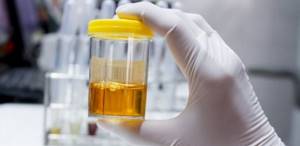
It is mandatory to retake the test after receiving a bad result. Women are advised to insert a tampon into the vagina before collecting fluid, and men are advised to carefully perform genital hygiene. If after retaking the analysis is far from normal, additional research is required:
- Addis-Kakovsky test;
- bacterial sowing;
- urine analysis according to Nechiporenko.
A three-glass sample demonstrates good results. Urine collection is carried out in one urination, but in three different containers, which are numbered in advance. Based on the test liquid in three portions, it is possible to accurately determine the specific disease that provoked leukocyturia.
The further course of the examination depends on the type of inflammatory disease and the tactics of subsequent therapy are selected. Inflammatory diseases of the kidneys and urinary tract require an ultrasound examination.
A culture test will allow you to determine the type of pathogen that caused the increase in white blood cells. Based on the results obtained, the doctor selects a drug from the group of antibacterial drugs (antibiotics) that are sensitive to the pathogenic microorganism.
IMPORTANT! Without bacterial culture, it makes no sense to prescribe treatment with antibacterial drugs for inflammatory diseases of the urinary system. Even the best antibiotic will be ineffective if the pathogen that caused the disease is resistant to the drug.
4. Treatment of the disease
Symptomatic treatment for significant bleeding includes Dicinon, Vikasol, calcium chloride.
If hematuria is caused by the passage of stones through the urinary tract, antispasmodics or surgical assistance are indicated.
As with any blood loss, it is advisable to prescribe iron supplements and B vitamins.
The main treatment should be aimed at eliminating the causes of internal bleeding. This may include antibiotics, surgical treatment, therapeutic enhancement of blood clotting, preventive measures for kidney prolapse and other treatment methods, depending on the diagnostic results.



